Scottish Election 2021: What happens now on SNP reshuffle, coalitions, challenges and indyref2
That they would be handed an unprecedented fourth term was never in doubt; but as they fought for a handful of marginal constituencies - taking East Lothian, Ayr and Edinburgh Central, but not Dumbarton or Eastwood - the chances of hitting the magical figure of 65 hung in the balance, and would eventually come down to number-crunching of the list votes.
In the end, the party fell short; the Greens, too, secured fewer MSPs than the polls suggested. But combined, they form a strong pro-independence majority, providing - so both parties assert - a clear mandate for a second Independence referendum after the Covid recovery.
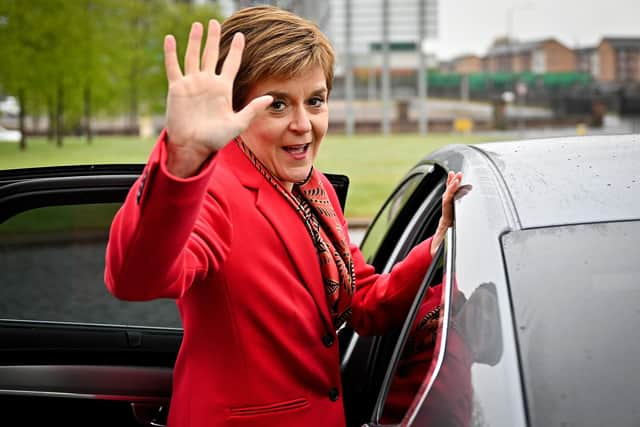

Advertisement
Hide AdAdvertisement
Hide AdSo what now for the SNP? Its immediate challenges are to talk to the Greens about any potential deal, to appoint a new Cabinet and to re-energise a government which - even those within the party hierarchy acknowledge - is flagging after 14 years in power.
A coalition with the Greens?
The relationship with the Greens will be key, not only because it will rely on its MSPs to support it on key issues, but also because a united front will be important as it faces down an increasingly hostile Boris Johnson over IndyRef 2.
In the SNP’s previous terms as a minority government - in 2007 and 2016 - the Greens have backed its budgets, after extracting concessions, but last month co-convener Lorna Slater hinted at the possibility of a formal coalition, saying her party wanted to be in government.
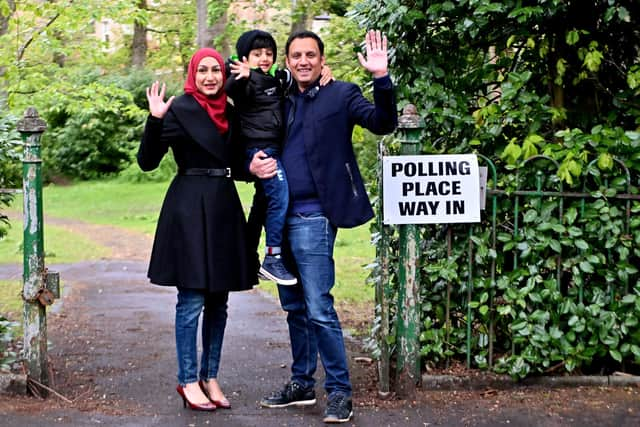

Slater pointed to other countries such as New Zealand where Prime Minister Jacinda Ardern has gone into coalition with the Greens despite delivering the biggest election victory for her centre-left Labour Party in half a century.
A coalition makes sense on several fronts. It would enhance the Scottish government’s environmental credentials in the run-up to COP26 and help it push through its controversial reform of the Gender Recognition Act (GRA), given the SNP has been struggling to find enough support from within its own ranks.
But others inside and outside the party are more sceptical, pointing to the 2010 Conservative/ Lib Dem alliance as an example of how junior partners can be damaged by coalitions. In Ireland, the Greens who formed one with Fianna Fail in 2007 haemorrhaged support after the party became enmeshed in the fall-out from the financial crash.
In addition, the Greens - who see the SNP as weak on the GRA - might prefer to maintain some distance from the party’s manifesto position.
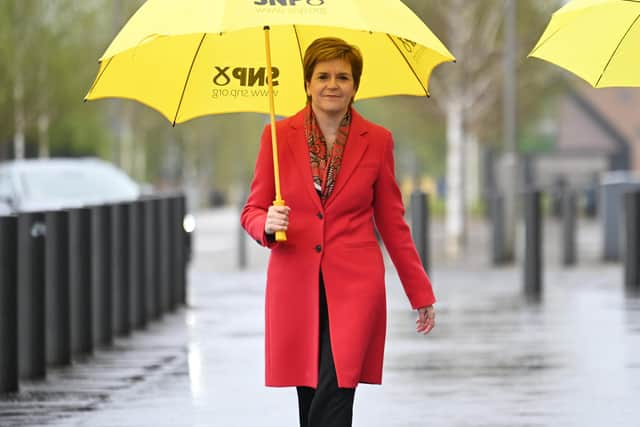

“I think it’s unlikely, regardless of the numbers, that there will be a coalition,“ says James Mackenzie, former head of media for the Scottish Greens. “With the exception of independence, I think there’s just too much distance between them.
Advertisement
Hide AdAdvertisement
Hide Ad“They [the SNP] are still wedded to oil and gas, still determined not to let local government sort their own finances. They have ministers who have been lamentable on biodiversity, who have had to be dragged kicking and screaming to make the tax system slightly more progressive. And the truth is, neither side is great at compromise on policy matters.”
Andy Maciver, co-founder of the lobbying and PR consultancy Message Matters, says the Greens have not capitalised on their potential power over the last five years and would do well to push for a ministry or even a Cabinet Secretary position with or without a formal coalition, but that - with the SNP close to a majority - the party might prefer just to take its chances.
“Green policy on the environment might be quite similar to what the grassroots SNP want, but it is significantly different to [official] SNP policy,” he says. “The party’s involvement could also have a significant impact on personal tax rates, the structure of local government and the relationship with the business community.
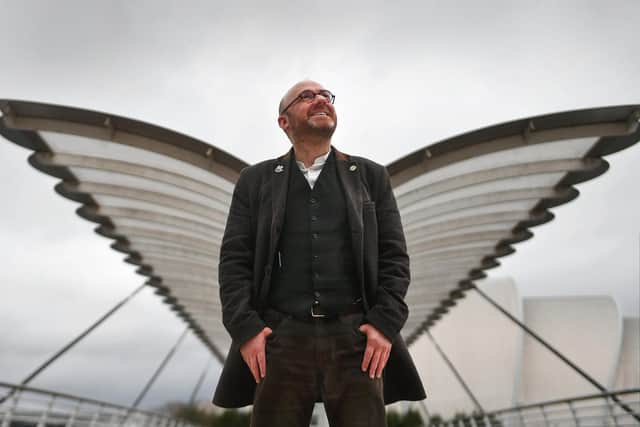

“I think it would cost the SNP quite a lot, and, of course, Nicola Sturgeon could throw it straight back at [Green co-convener] Patrick Harvie and say ‘If you want to be the one who brings down the nationalist government and force us to have an election, then on your head be it’.”
A major reshuffle
After the results have been finalised, the SNP will have to quickly rearrange its Cabinet. With 10 MSPs plus four cabinet secretaries - Health Secretary, Jeane Freeman, Environment Secretary Roseanna Cunningham, Constitution Secretary, Mike Russell, and Communities Secretary Aileen Campbell - all standing down, the party has less experience to draw on.
As a result, one thing most insiders agree on is that the Cabinet will be reduced from 12 to eight members, with more ministers (who would require less experience) serving beneath them. Sturgeon has placed great emphasis on creating a gender balance and that is likely to continue to be a priority.
The election of party stalwart and Sturgeon loyalist Angus Robertson - tipped by some as a future leader - to Ruth Davidson’s former seat, Edinburgh Central, with a majority of 4,732, is a major plus for the party.
As a former MP and Westminster leader, Robertson would be perfectly placed to take on Russell’s role, preparing the ground for the next independence referendum and allowing Sturgeon to carry on dealing with Covid.
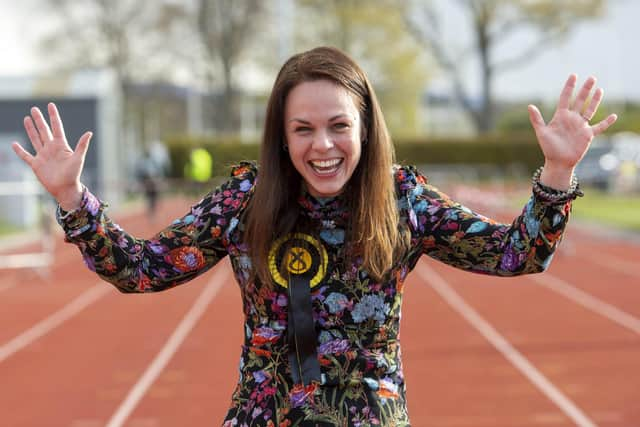

Advertisement
Hide AdAdvertisement
Hide AdOne insider has suggested Finance and the Economy might be combined and that John Swinney - who has struggled in Education - could take over as Cabinet Secretary there.
“The Economy brief is really important,” he says. “We have a big problem with our relationship with business and none of the parties has an adequate recovery plan so I’d say that’s top of the list”
Meanwhile, the current finance secretary Kate Forbes - who is also seen as a possible successor to Sturgeon - is tipped for a service delivery role.
“If Kate Forbes is a future First Minister, she needs humanised,” another source says. “You can’t become First Minister having only ever done the numbers - you have to do education or health.
“If it were me, I would put her in health because she is brainy and health needs a brain. It doesn’t need a suit that talks on the telly, and it’s far and away the biggest challenge: it has the biggest budget lines, the toughest decisions, and it requires the ability to handle a crisis and to plan for demographic change.”
The SNP has already committed to the creation of a new ministerial role focused on youth unemployment.
Who will be Presiding Officer?
Another key post will be that of the Presiding Officer. The SNP is likely to want a pro-independence MSP because of the PO’s role in establishing the validity of the Referendum Bill, which will provide the framework for the next referendum.
One name being floated is Fiona Hyslop, current Secretary for the Economy, Fair Work and Culture although, with a limited number of women with sufficient experience to be in the Cabinet, her services may continue to be required there. There has also been some speculation the position would go to a Green - perhaps Alison Johnstone.
Advertisement
Hide AdAdvertisement
Hide AdHowever, the PO is required to remain impartial. With both the SNP and the Greens securing fewer MSPs than they hoped, they will have to balance the pros of having one of their own in a position of influence against the cons of losing their vote on important issues. Conservative Jackson Carlaw is also thought to have his eye on the role.
The first 100 days
During the campaign, Sturgeon stressed her priority for the next 18 months would continue to be Covid, with the plebiscite unlikely to be held before 2023.
To demonstrate its focus on the pandemic recovery, the SNP has published a First 100 days document in which it pledges to start a consultation on a National Care Service, roll out a summer programme for school pupils and give low-income families £100 each before the end of August.
The document commits to the creation of a Council for Economic Transformation to shape a ten-year strategy and the setting up of a new green jobs workforce academy to help reskill people amid a move to net-zero.
Andrew Wilson, economist, former SNP MP and chair of the Sustainable Growth Commission wants the party to go further.
“There’s a need for a turbo-charging of the economy,” he says, “but there’s a problem with that because we don’t have the power to borrow and invest, which is really important, so that would be one of my priority suggestions: to push Westminster for borrowing powers or access to the UK’s borrowing powers in the coming weeks ahead of any referendum.”
Wilson says his plans could see Scottish ministers able to issue large-scale bonds to rejuvenate industries and that they have the support of Lord Macpherson of Earl’s Court, who was the permanent secretary to the Treasury under Gordon Brown, Alistair Darling and George Osborne.
What about indyref2?
The dampening down of expectations on the timing of an independence referendum during the campaign seemed to signal an SNP acceptance that there was little mainstream appetite for another vote while the country was still experiencing the fall-out from the pandemic.
Advertisement
Hide AdAdvertisement
Hide AdThe failure of Alba to return a single MSP means there will be no motion calling on Sturgeon to start immediate negotiations with the UK government. But she will continue to be under pressure from the fundamentalists within her party and the wider movement and it is clear the constitutional question will dominate the headlines and the agenda.
Before the votes had been counted, a row had already broken out over whether an SNP/Green majority (as opposed to an overall SNP one) constituted a mandate - although, arguably, the higher than expected turn-out across the country strengthens the legitimacy of the result.
Furthermore, both the Conservatives - who have been emboldened by their success in the local council elections and the Hartlepool by-election - and the SNP appear to be hardening their positions.
The front page headline in yesterday’s Telegraph ran “PM: No New Scottish Referendum”, while Sturgeon - who has previously pledged no wildcat vote - told ITV news correspondent Peter Smith the party would bring forward its Referendum Bill as planned and it would be up to Boris Johnson to go to court to stop it.
Maciver, who is a former head of communications for the Scottish Tories, says that - while in 2016 the manifestos were less explicit - “in this election it is crystal clear to everybody if you vote SNP or Green, then you are voting for a second referendum.”
He believes that instead of focusing on how to prevent it, the Westminster government should now turn its attention to how to win it, coming up with a new vision and structure for the UK, which was so lacking last time round.
While not disputing the need to focus on the Covid recovery, he fears a hiatus while everyone waits for a second referendum, with the government offering piecemeal policies and no radical overhauls.
“I would like to think [Sturgeon] might come out and say: ‘We need to start a big conversation about things like schools’ because things are not going well. I would like to think she might have a conversation about the structure of the NHS on the basis that you can’t keep just throwing money at it,” he says.
Advertisement
Hide AdAdvertisement
Hide Ad“But the reality is there is no incentive for the Scottish government to rock the boat in any policy areas because, if you do, you upset people and you lose Yes voters.”
Maciver says it’s the same for Scottish Tory leader Douglas Ross, whose campaign has been based on opposing a second independence referendum. “He doesn’t want to rock any boats either so the next two years will be the same as the last five years - with nobody taking a chance, nobody thinking big, nobody developing any major thought processes.”
Challenges
The SNP government is heading into an immediate firestorm over education. Next month the Organisation for Economic Cooperation and Development (OECD) will publish its report into the senior phase of Scottish education (S4-S6) which was postponed from February and which is widely expected to be damning.
This will be quickly followed by a predicted stramash over this year’s Nat 5, Higher and Advanced Higher results. These were based on a series of teacher assessments which, critics claim, are exams in all but name.
Tough questions are likely to be asked about the failure to come up with adequate contingency plans and about the role of the Scottish Qualifications Authority (SQA). Whoever takes on the education brief will have to brace themselves for a media onslaught.
A further potential flashpoint for the SNP is the aforementioned reform of the GRA, which has divided the party and the movement. The SNP wants to make it easier for trans people to change their birth certificates, but the issue has become polarised, with pro-trans activists and gender critical feminists in increasingly entrenched camps.
The SNP’s handling of the Bill, which was shelved while a second, as yet unpublished, consultation was carried out, has annoyed both camps, with the gender critical feminists claiming to have been ignored, and the pro-trans activists claiming the leadership has backpedalled on the policy and failed to do enough to combat transphobia.
In its manifesto, the SNP pledged to tackle transphobia head-on through education. It committed to make changes to the GRA, in consultation with trans people, women, equality groups, legal and human rights experts, while ensuring the rights or protections that women currently have under the Equality Act.
Advertisement
Hide AdAdvertisement
Hide AdIn the last parliament, a majority of SNP MSPs did not support the Bill - which is partly why it was shelved - although the new constituency and list MSPs are thought to be more GRA reform friendly and this may have changed the dynamics.
Sturgeon’s hand has been further strengthened by the implosion of Alba, which positioned itself as the champion of the gender critical wing of the movement. But the two “sides” remain far apart. It is going to take a degree of diplomacy on the part of equalities secretary Shirley-Anne Somerville (or whoever holds that post in the new parliament) and a willingness on both sides to come to the table, for the rift to be healed and a legislative path to be charted.
These are some of the key issues facing the SNP. But what of the other parties? Having secured no MSPs, Alba would appear to be a busted flush. There have been suggestions it might field candidates in the local elections. But, in an interview with the Scotsman, Salmond, who is interim leader, said he had not decided whether to stand for the role at the party’s conference. And the absence of any representation in Holyrood has reduced the chances of any further defections on the part of MSPs.
Scottish Labour’s new leader Anas Sarwar is widely acknowledged to have run a good campaign. He put distance between himself and the constitutional debate, focusing on issues such as the economy and education. Scottish Labour and the SNP share common ground on many domestic policies and Sturgeon recently pronounced herself willing to collaborate with him on the Covid recovery.
His campaign does not appear to have translated into an electoral resurgence. Deputy Scottish leader Jackie Baillie held on to Dumbarton, increasing her majority from 109 to 1,483, but that had as much to do with her personal standing and tactical voting as it did with Sarwar’s performance. Sarwar - who was standing in Glasgow Southside - polled a respectable 10,279 votes, but was never going to beat Sturgeon. And his party’s vote share and number of MSPs do not appear to have altered much from the 2016 election.
However, Ailsa Henderson, Professor of Political Science at the University of Edinburgh, says recent polling has indicated underlying attitudes towards Scottish Labour may be shifting.
“What’s been interesting in the data is that since Anas Sarwar became leader of Labour, the party has moved up in terms of competence evaluations,” she says.
While Labour already came second to the Tories on everything but the economy, the SNP had been streets ahead. “We are now seeing Labour nipping at the heels of the SNP on education, where they are just four points behind, and they have overtaken the Tories on the economy.”
Advertisement
Hide AdAdvertisement
Hide AdHenderson says the Tories’ decision to double down on their opposition to independence instead of branching out from the constitutional question and presenting themselves as a government in waiting could cost them in the long-term.
After a period in the wilderness, this could augur well for Scottish Labour. “Sarwar understands the need to build a separate identity,” a source says. “He also understands that Labour lost votes to both Yes and No supporters in the past, so it is going to have to regain them from both.
“When it comes to the union, there’s an argument of the heart that needs to be made. It’s not just about economics, it’s softer and more emotional. He has the potential to do that.”
Still, it is the SNP which has the most to celebrate. Even without their majority, the election has propelled them into a fourth term, and provided a bumper pro-independence parliament. Now they just have to find the energy to propel themselves through the next five years.
Comments
Want to join the conversation? Please or to comment on this article.
